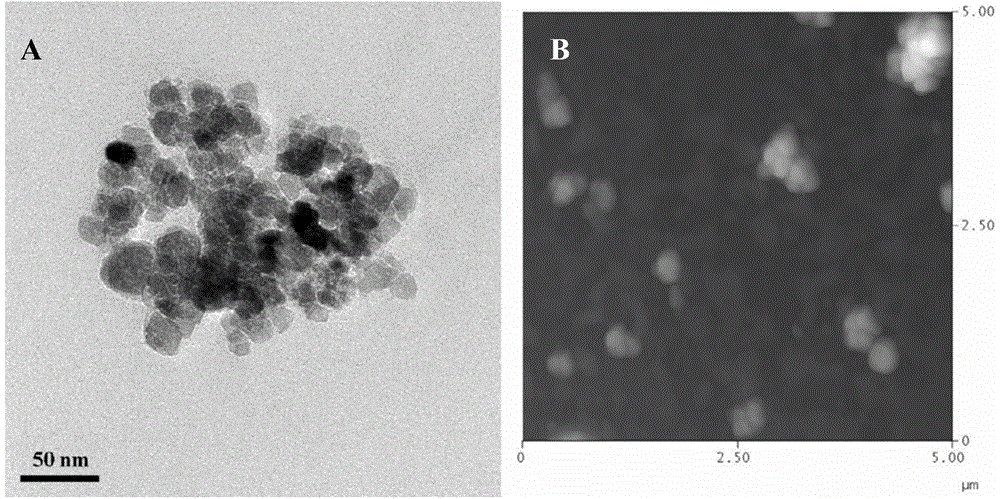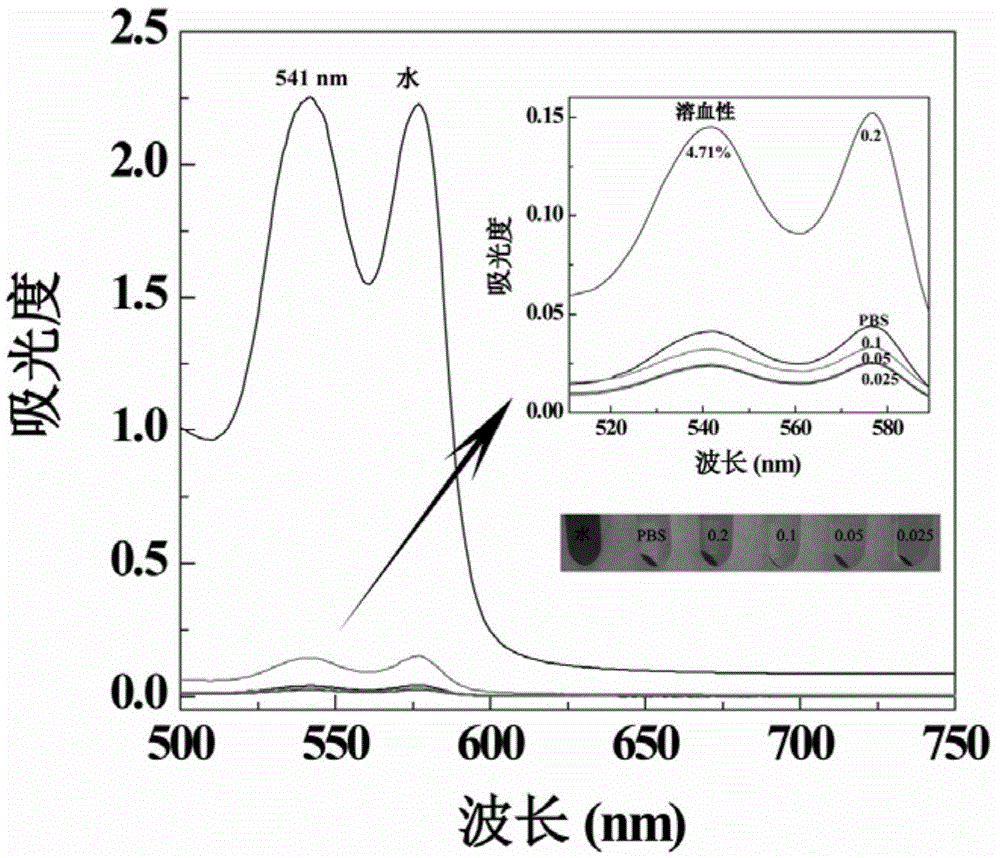Preparation method of ferric oxide nanoparticle supported sodium alginate nanogel
A technology of iron oxide nanometers and sodium alginate, which is applied in preparations for in vivo tests, pharmaceutical formulas, emulsion delivery, etc., can solve problems such as no discovery, and achieve uniform distribution, good water solubility, and simple operation
- Summary
- Abstract
- Description
- Claims
- Application Information
AI Technical Summary
Problems solved by technology
Method used
Image
Examples
Embodiment 1
[0065] 1.25g FeCl 2 4H 2 Pour O into a beaker, add 7.75mL of ultrapure water, and add 6.25mL of NH 3 ·H 2 O, the above mixed solution was continuously stirred for 10 minutes under air atmosphere to fully oxidize the ferrous iron, and then the mixed solution was transferred to a high-pressure reactor. Dissolve 0.5g PEI in 5mL aqueous solution by ultrasonic, transfer it into the reaction kettle with a pipette gun, mix well with the solution in the reaction kettle, and react at 134°C for 3 hours. After the reaction was over, it was naturally cooled to room temperature, and the obtained black precipitate Fe 3 o 4 -PEI magnetic separation to remove the supernatant, add an appropriate amount of ultrapure water to ultrasonically disperse, and then magnetically separate, repeat the ultrapure water washing five times to remove impurities, and then redisperse in 20mL ultrapure water to obtain PEI coating Fe 3 o 4 Nanoparticles (Fe 3 o 4 -PEI). Take 3mL of 1wt% AG (30mg) aqueou...
Embodiment 2
[0067] Get the AG / PEI-Fe prepared in Example 1 3 o 4 Nanogel, which was diluted 100 times with ultrapure water, was used to measure surface potential and hydrodynamic diameter. Zeta potential measurement results show that AG / PEI-Fe 3 o 4 The surface potential of the nanogel is −7.58 mV, demonstrating that AG and Fe 3 o 4- Successful crosslinking of PEI. Its hydrodynamic diameter is 308.75±16.33nm, the particle size distribution is uniform, and the hydrodynamic diameter can remain almost unchanged for a long time, which shows that AG / PEI-Fe 3 o 4 Nanogel (Example 1) has good colloidal stability. Observation of AG / PEI-Fe prepared in embodiment 1 by transmission electron microscope (TEM) and atomic force microscope (AFM) afterwards 3 o 4 The morphology of nanogels (such as figure 1 ). The results show that the formed AG / PEI-Fe 3 o 4 The shape of the nanogel is spherical or quasi-spherical, the size is uniform, the diameter of the gel is about 170nm, there is no obvio...
Embodiment 3
[0069] Measure the AG / PEI-Fe that embodiment 1 prepares by ICP-AES testing method 3 o 4 The content of Fe element in the nanogel. Prepare AG / PEI-Fe with Fe concentration of 0.0025, 0.005, 0.01, 0.02, 0.04, 0.08mM respectively 3 o 4 Nanogel aqueous solution 2mL, the T of material under different Fe concentration is measured by magnetic resonance imaging analyzer 2 relaxation effects (such as figure 2 ). The relaxation rate test results show that AG / PEI-Fe 3 o 4 The reciprocal of the relaxation time of the nanogel has a good linear relationship with the increase of iron concentration (in the range of 0.0025-0.08mM concentration). AG / PEI-Fe is obtained by calculation 3 o 4 r of nanogel 2 The value is 170.81mM -1 the s -1 . Therefore, the AG / PEI-Fe prepared by the present invention 3 o 4 Nanogel can be used as an excellent T in MR molecular imaging diagnosis 2 Signal attenuating contrast agents.
PUM
 Login to View More
Login to View More Abstract
Description
Claims
Application Information
 Login to View More
Login to View More - R&D
- Intellectual Property
- Life Sciences
- Materials
- Tech Scout
- Unparalleled Data Quality
- Higher Quality Content
- 60% Fewer Hallucinations
Browse by: Latest US Patents, China's latest patents, Technical Efficacy Thesaurus, Application Domain, Technology Topic, Popular Technical Reports.
© 2025 PatSnap. All rights reserved.Legal|Privacy policy|Modern Slavery Act Transparency Statement|Sitemap|About US| Contact US: help@patsnap.com



